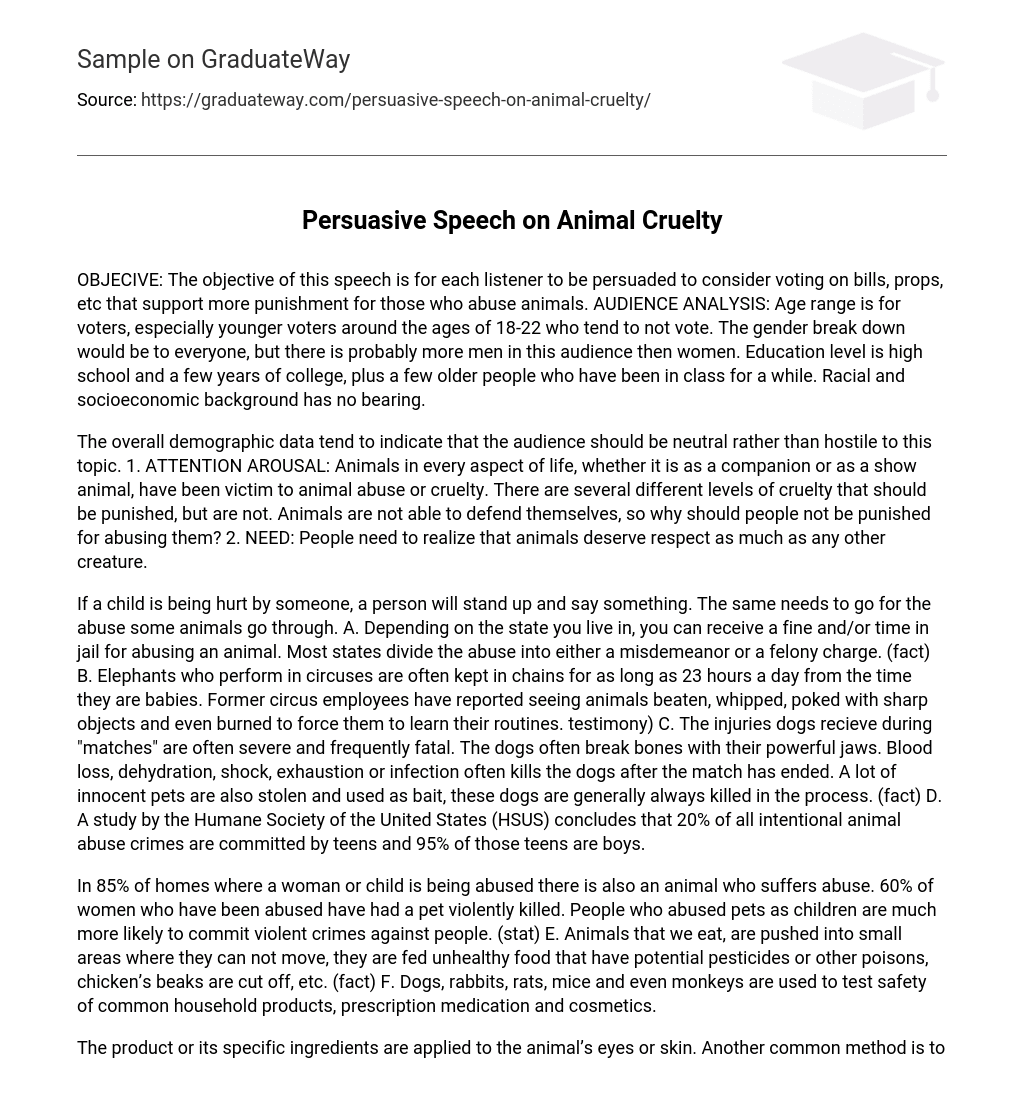Writing a persuasive speech on animal cruelty that moves an audience demands a blend of emotional resonance, factual integrity, and compelling narrative. Animal cruelty is an ever-pertinent issue that elicits strong emotions and requires a well-rounded approach to galvanize listeners towards action. This guide delves into the multifaceted aspects of crafting such a speech, providing insights into content types that can be woven together to engage, inform, and inspire.
The initial step in composing the speech hinges on understanding the audience. Evaluate their perspectives, values, and potential biases concerning animal rights. Tailoring the content according to these insights will enhance the likelihood of resonating with them. A preliminary acknowledgment of common sentiments toward animals can foster a connection, making it easier to convey more complex issues regarding cruelty.
To begin, a compelling opening is imperative. A startling statistic or a moving anecdote can instantly draw attention. For instance, detailing the plight of a specific animal subjected to cruelty can evoke a visceral response. Consider opening with a vivid illustration: “Imagine a dog, frail and trembling, confined to an unsanitary cage, bereft of love and care. This is the grim reality for countless animals worldwide.” Such imagery establishes an emotional context, setting the stage for the ensuing discourse.
Next, fortify the emotional appeal with substantiated statistics. Logical arguments enhance the persuasive aspect of the speech by corroborating emotional claims with empirical evidence. Cite research demonstrating the scope of animal cruelty, such as the number of animals suffering in laboratory experiments or the prevalence of neglectful pet ownership. Data illustrates the magnitude of the issue and asserts credibility. For instance, “According to the Humane Society, an estimated 70 million stray cats roam in the United States, many enduring an existence of suffering and neglect.”
Transitioning from statistics, it is essential to delineate the various manifestations of animal cruelty. This can involve detailing issues such as factory farming, animal testing, and entertainment industries that exploit animals. By categorizing the different types of cruelty, the audience can gain a comprehensive understanding of how pervasive the problem is. Use descriptive language to conjure vivid images of each scenario, allowing the audience to visualize the suffering inflicted upon these animals.
Illustrate the emotional nuances by sharing stories of both individual animals and larger systemic issues. For example, recount a case of a rescued animal that overcame adversity thanks to a compassionate individual or organization. Narratives about rehabilitation and recovery can provide a glimmer of hope and motivate the audience to act. Conversely, recounting distressing accounts of cases unresolved can evoke feelings of urgency and frustration, pressing listeners to recognize the acute need for change.
In addition to narratives, incorporating expert opinions can further solidify arguments. Quoting veterinarians, animal welfare advocates, or researchers serves to enrich the speech with authoritative perspectives. Their insights can elucidate the psychological and physiological impacts of cruelty on animals, lending weight to the call for advocacy. For example, “Dr. Jane Goodall eloquently states, ‘The least we can do is to let people know what is really happening to animals in the world.’” This not only bolsters credibility but also aligns the audience with respected figures in the field.
After presenting the problem, it is advantageous to propose actionable solutions. Providing clear avenues for engagement empowers the audience and transforms passive concern into active participation. Suggestions might include adopting animals from shelters, supporting cruelty-free products, engaging in activism, or donating to organizations dedicated to animal welfare. Lay out specific measures individuals can take; this clarity can galvanize action. For instance, you might conclude a segment with a powerful call to action: “Join the fight for those who cannot fight for themselves—donate, volunteer, advocate, and foster a culture of compassion.”
Moreover, employing a persuasive rhetorical structure enhances the speech’s effectiveness. Utilizing techniques such as repetition, parallelism, and rhetorical questions can provoke thought and reinforce key messages. Posing questions to provoke reflection—“What kind of society are we if we turn a blind eye to suffering?”—implores the audience to consider their values and invokes guilt for inaction.
Additionally, it is beneficial to include a personal perspective or a testimony that reveals a deeply held belief about animal welfare. Authenticity breeds connection; sharing a compelling reason for advocating against cruelty can resonate with listeners on a personal level. This personal narrative humanizes the issue, fostering empathy and a sense of shared responsibility.
Finally, as the conclusion approaches, articulating a strong closing statement is critical. Summarize key points succinctly, and reiterate the emotional and logical appeals made throughout the speech. Leave the audience with a poignant reminder of the suffering animals endure daily, ideally coupled with an invitation to reflect on their role in instigating change. A closing line like, “The choice is ours; let us choose compassion over indifference, action over apathy,” can sear the message into their consciousness.
In summation, writing a persuasive speech on animal cruelty requires a harmonious balance of emotional storytelling, factual evidence, and actionable proposals. The goal is to motivate an audience not only to understand the enormity of the issue but to become advocates for change. Through a thoughtful blend of narratives, statistics, expert opinions, and personal stories, the speech can inspire audiences to confront cruelty and champion the voiceless in a world that often overlooks their plight.







